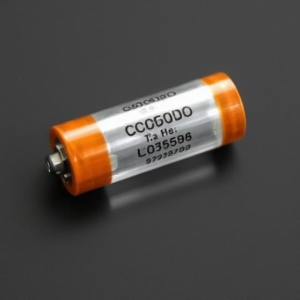What is a DC Circuit?
A DC (Direct Current) circuit is an electrical circuit where the current flows in one direction only. It usually includes a power source (like a battery), wires, resistors, capacitors, and other components. DC circuits are common in battery-powered devices like flashlights, radios, and toys.

Main Components of a DC Circuit
-
Power Source: Provides the energy. Examples: batteries, DC power supplies.
-
Conductors (Wires): Carry current from one component to another.
-
Resistors: Limit the amount of current and control voltage.
-
Capacitors: Store and release energy. Often used for smoothing or timing.
-
Switches: Allow you to open or close the circuit (turn it on or off).
-
LEDs or Lamps: Show that the current is flowing or provide lighting.
How to Design a Simple DC Circuit
-
Identify the purpose: What do you want your circuit to do?
-
Choose a power source: For example, a 9V battery.
-
Select components: Based on your goal (e.g., LED and resistor to limit current).
-
Draw a circuit diagram: Use symbols to show how parts are connected.
-
Calculate values:
-
Use Ohm’s Law:
(Voltage = Current × Resistance) to choose the right resistor.
-
For example: If using a 9V battery and you want 20mA (0.02A) current for an LED:
-
-
Build the circuit: Connect everything using a breadboard or wires.
-
Test it: Make sure everything works before finalizing it.
Tips for Good Circuit Design
-
Use the correct polarity for components like LEDs and capacitors.
-
Double-check all connections before turning on the power.
-
Don’t short the battery – always have a load (like a resistor) in the path.
Basic Troubleshooting Steps
If your DC circuit isn’t working, follow these steps:
1. Check Power Supply
-
Is the battery or power supply connected?
-
Is it the correct voltage?
-
Use a multimeter to measure the voltage.
2. Check Connections
-
Look for loose wires, broken connections, or misplaced components.
-
Make sure components are connected exactly like your diagram.
3. Test Components
-
Use a multimeter to test:
-
Resistors (check resistance)
-
Capacitors (look for signs of damage or use capacitance mode)
-
LEDs (test with diode mode)
-
4. Measure Voltages
-
Measure voltages across each part of the circuit.
-
If there’s no voltage across a component, it might be connected wrong or damaged.
5. Look for Heat or Smell
-
If a component is getting hot or smells burnt, it may be overloaded or shorted.
6. Replace Suspect Parts
-
Try replacing one part at a time and see if it fixes the issue.
Common Mistakes to Avoid
-
Forgetting resistors with LEDs (they can burn out quickly).
-
Wrong polarity on electrolytic capacitors or diodes.
-
Incorrect resistor values – use a color code chart or multimeter to check.
-
Short circuits – connecting wires directly from positive to negative without a load.
Example: Simple LED Circuit
Goal: Turn on an LED using a 9V battery.
What you need:
-
9V battery
-
470Ω resistor
-
LED
-
Breadboard and wires
Steps:
-
Connect the positive side of the battery to one end of the resistor.
-
Connect the other end of the resistor to the positive leg of the LED.
-
Connect the negative leg of the LED to the battery’s negative terminal.
-
The LED should light up.
If not:
-
Check LED orientation.
-
Make sure resistor is not too high in value.
-
Check all connections.
Summary
Designing and troubleshooting DC circuits is about understanding how electricity flows and how components behave. You need to:
-
Understand basic components like resistors, capacitors, and LEDs.
-
Use tools like a multimeter to measure voltage, current, and resistance.
-
Apply Ohm’s Law to choose the right components.
-
Check connections, power, and component values if something doesn’t work.











